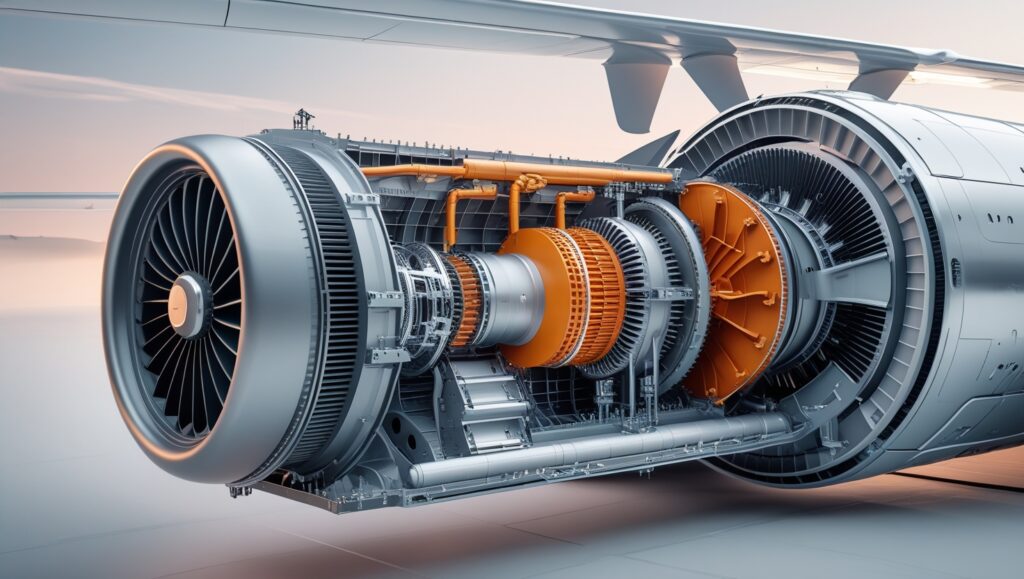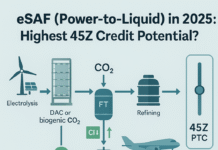As aviation faces mounting pressure to reduce emissions, hydrogen engines in aviation are emerging as a promising solution. With aircraft giants like Airbus leading the charge—especially through its ZEROe program—hydrogen-powered aircraft may soon become a reality. These engines emit only water vapor, offering a clear path to zero-emission aviation.
In this article, we explore how hydrogen propulsion works, its benefits, challenges, and the timeline for commercial adoption.
What Are Hydrogen Engines in Aviation?
Hydrogen engines use hydrogen fuel to generate propulsion via two main methods: combustion and fuel cells.
Hydrogen Combustion Engines
- Burn hydrogen in modified jet engines or internal combustion engines.
- Emit only water vapor.
- Easier to integrate into existing aircraft designs.
- Less efficient than fuel cells.
Hydrogen Fuel Cells
- Convert hydrogen and oxygen into electricity using an electrochemical reaction.
- Power electric motors for aircraft propulsion.
- Highly efficient with no harmful emissions.
For a more technical breakdown of propulsion types, check our article on jet engines vs electric motors.
Key Benefits of Hydrogen-Powered Aircraft
1. Zero Emissions
Hydrogen-powered engines produce no CO₂, NOx, or particulates—only water vapor. If the hydrogen is green (produced via renewable energy), it can eliminate aviation’s carbon footprint entirely.
2. Renewable and Scalable
- Green hydrogen is produced using water electrolysis powered by solar or wind.
- Blue hydrogen, a short-term alternative, captures carbon from natural gas processing.
- As technology advances, hydrogen will be scalable across multiple industries (shipping, trucking, etc.).
3. Higher Efficiency
Fuel cells can convert more of hydrogen’s energy into usable power compared to traditional jet engines, especially in electric aircraft configurations.
4. Lower Noise Levels
Electric motors powered by hydrogen fuel cells are quieter, supporting urban air mobility and short-range commuter aircraft.
Challenges of Hydrogen-Powered Aviation
Hydrogen Storage
Hydrogen is light but bulky, requiring storage at either high pressure or cryogenic temperatures. This poses design challenges for aircraft without compromising performance or payload.
Infrastructure & Refueling
Airports must invest in new hydrogen refueling systems. Global hydrogen supply must also scale rapidly—see our overview on airport infrastructure for sustainable aviation.
Cost
Today, green hydrogen is costly. It must become more competitive than jet fuel to enable widespread adoption.
Aircraft Redesign
Hydrogen propulsion requires rethinking aircraft architecture, including wings, fuselage, and fuel tank integration. Hybrid solutions (e.g., hydrogen-electric) may serve as a transitional technology.
Hydrogen Aviation Projects & Milestones
Airbus ZEROe
Airbus plans to launch its first commercial hydrogen aircraft by 2035, with demonstrators flying by 2030. Designs include:
- A turbofan aircraft powered by liquid hydrogen.
- A blended-wing body concept.
Read more at Airbus ZEROe.
ZeroAvia
This company already flew a hydrogen-powered aircraft and targets commercial flights by 2030. Visit ZeroAvia.com for updates.
Other Initiatives
Universal Hydrogen is converting existing aircraft with modular hydrogen capsules.
Rolls-Royce and EasyJet are co-developing hydrogen propulsion.
When Will Hydrogen Aviation Become Reality?
| Decade | Milestone |
|---|---|
| 2030s | Short-range commercial hydrogen aircraft in service |
| 2040s | Long-haul hydrogen flights begin operations |
| 2050+ | Hydrogen becomes mainstream for commercial aviation |
For predictions about electric and hydrogen aircraft co-existing, explore our piece on the future of sustainable aviation.

Conclusion: Is Hydrogen the Future of Flight?
Hydrogen engines in aviation are not a distant dream—they’re in development now. While infrastructure, storage, and cost pose major challenges, the momentum behind hydrogen technology is undeniable.
If governments, industry leaders, and infrastructure providers align, net-zero aviation could be achieved within our lifetime.
Want to learn more about sustainable aircraft? Visit our section on Green Propulsion Technologies.







[…] The engine is a technological leap forward in combining performance, low observability, and reliability—especially for multirole operations. For more details on how the F-35 leverages this engine, read our article: Inside the F-35 Lightning II: Stealth and Power Combined. […]
[…] If you want to learn more about modern commercial aircraft designs and their efficiency improvements, check out our Wings & Engines section. […]
[…] to go deeper? We’ve covered related topics in our article “Hydrogen Engines in Aviation: Clean Power for a Sustainable Future”, which explores how hydrogen propulsion complements today’s sustainable […]
[…] Learn more about the F135 engine in detail (Internal – Aviation […]